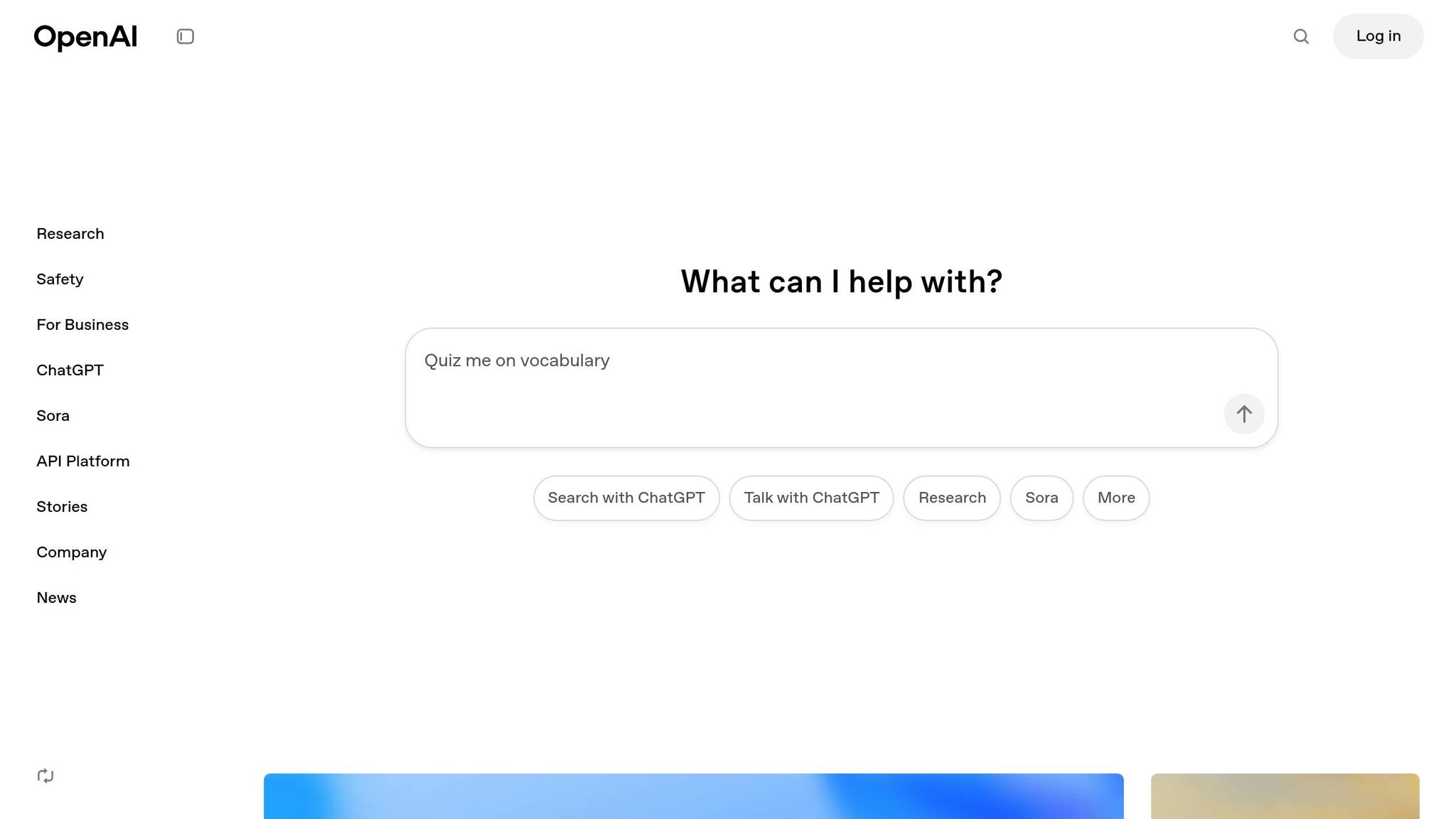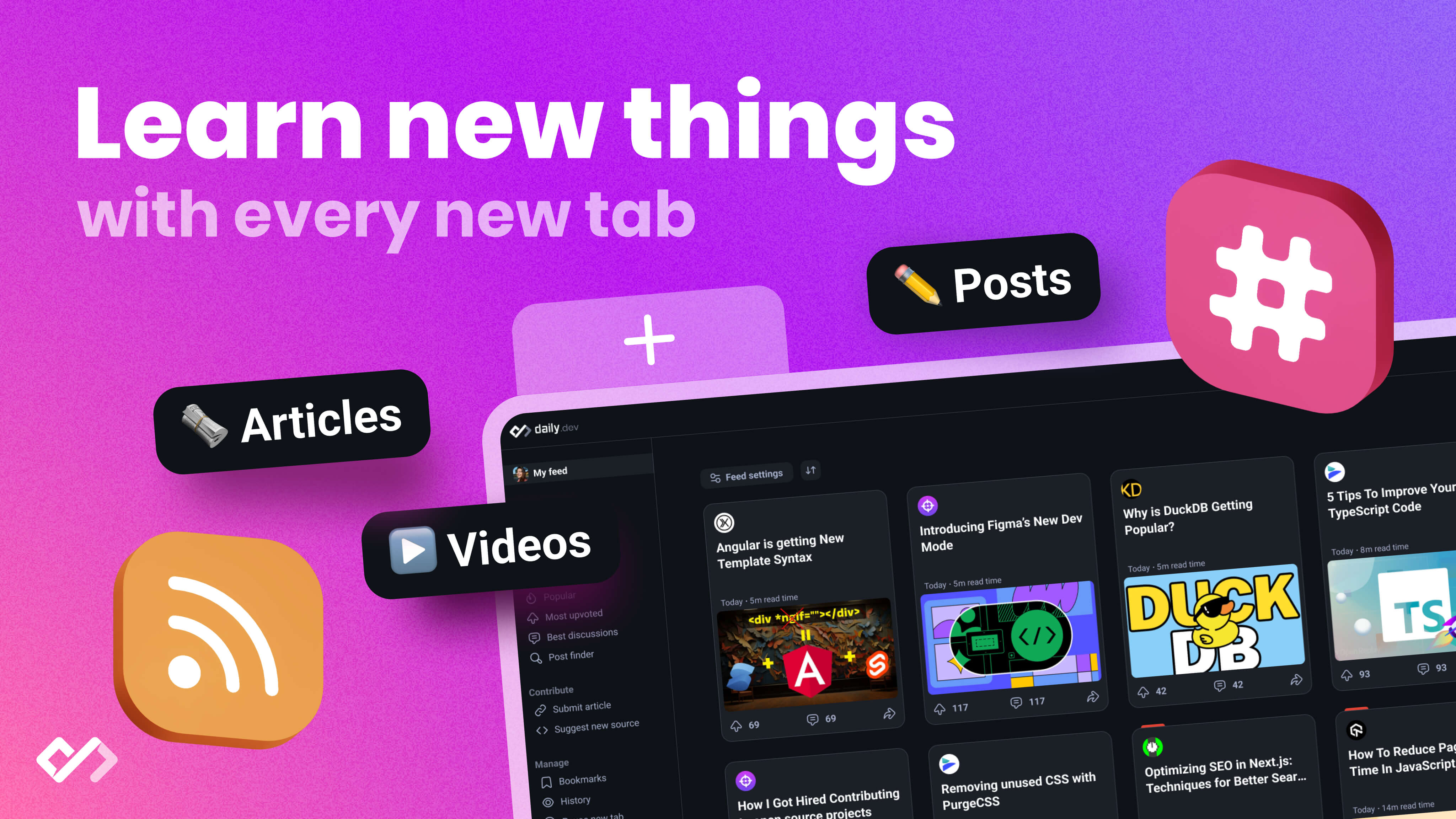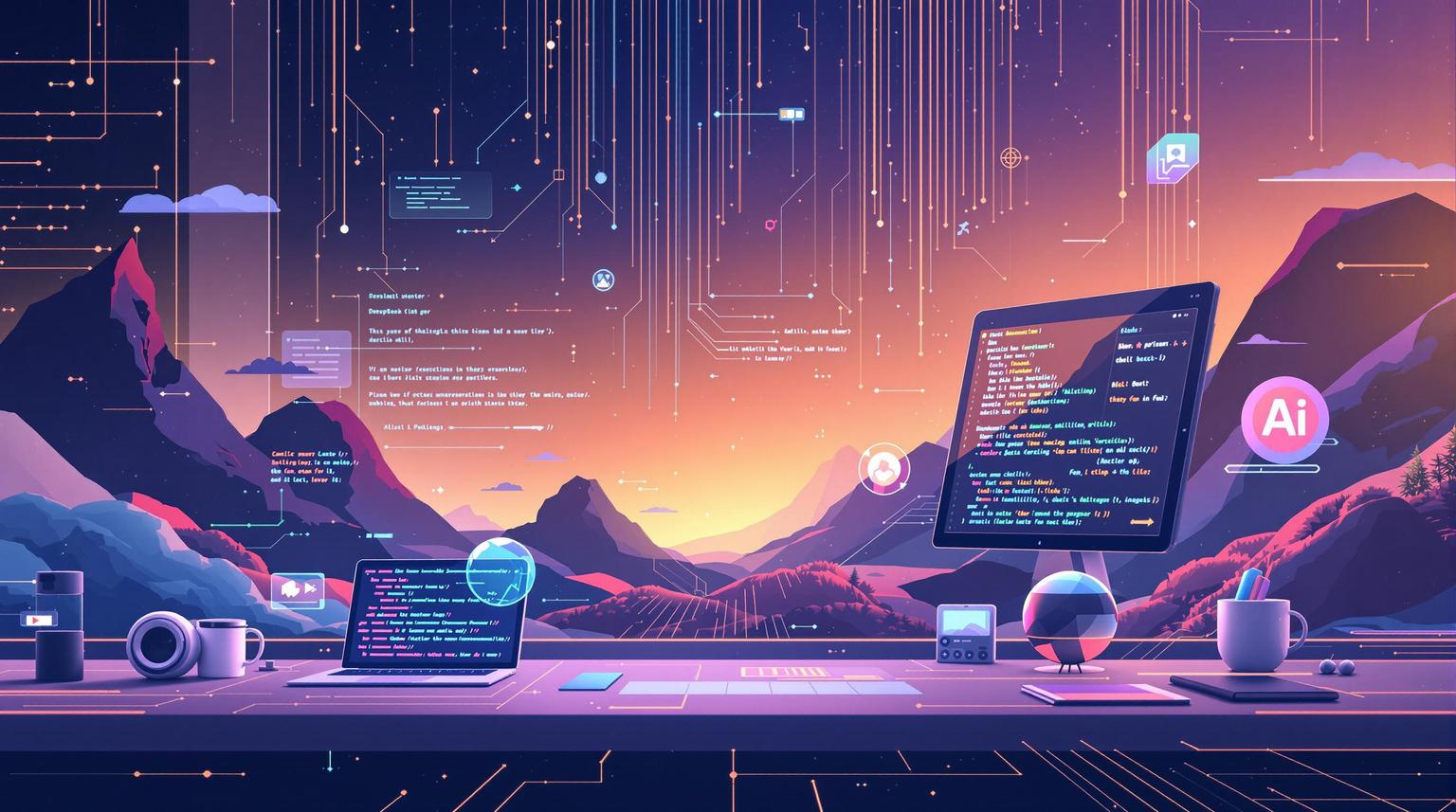


Explore the groundbreaking features of the upcoming AI model that promises to revolutionize coding and workflow automation for developers.
Big news for developers: GPT-5 is launching in early August 2025. It’s not just an update - it’s a unified system combining reasoning, multimodal input (text, images, audio, video), and agent functionalities. Here’s what you need to know:
Key Features:
- 1 Million Token Context Window: Handle large projects and complex conversations without losing track.
- Persistent Memory: Remembers project details across sessions - no need to re-explain.
- Default Chain-of-Thought Reasoning: Excels at multi-step problem-solving without extra prompts.
- Multimodal Capabilities: Works across text, images, and audio seamlessly.
- Workflow Automation: From debugging to documentation, it simplifies repetitive tasks.
What It Means for You:
- Faster, more accurate code generation and debugging.
- Integration into IDEs for real-time suggestions.
- API access for custom workflows.
- Early access for ChatGPT Plus subscribers ($20/month).
Limitations:
- Still prone to hallucinations (factually inaccurate outputs).
- Requires clear prompts and human oversight.
- High computational costs may limit accessibility for smaller teams.
Bottom Line: GPT-5 is a powerful tool for developers, but it thrives when paired with human expertise. Start small, test its capabilities, and integrate it into your workflow carefully.
Sam Altman on AGI, GPT-5, and what’s next - the OpenAI Podcast Ep. 1

What GPT-5 Can Do for Developers
GPT-5 combines advanced reasoning, multimodal input capabilities, and workflow automation, making it a game-changer for developers. It supports every stage of the development process - from writing and debugging code to solving complex challenges and improving team collaboration. Let’s dive into how it can enhance coding and streamline workflows.
Smarter Code Writing and Debugging
GPT-5 takes code generation to a whole new level. With its massive 1-million-token context window, it can handle large codebases, making tasks like analyzing, refactoring, and debugging more seamless than ever.
The model doesn’t just spot errors; it explains why they happen and suggests optimized fixes. Specialized GPTs, such as Python GPT and Code Copilot, are designed to identify bugs, provide detailed explanations, and deliver solutions. This means developers can work more efficiently, with fewer interruptions and faster resolutions.
Enhanced Problem-Solving and Logical Reasoning
GPT-5's structured reasoning abilities help it tackle complex problems with greater accuracy. Its multi-step approach reduces hallucinations and allows for better contextual understanding, making it an excellent assistant for autonomous task execution.
For instance, GPT-5 can integrate directly into IDEs, offering inline suggestions for refactoring, code reviews, and even a comprehensive understanding of an entire codebase. Whether you’re designing microservices, planning database migrations, or improving API performance, GPT-5’s problem-solving skills make it a valuable partner for addressing architectural challenges.
Boosting Workflow Automation and Productivity
The productivity gains from GPT-5 go far beyond writing code. AI coding tools have already been shown to double task speed in some cases, and GPT-5 is expected to push these boundaries even further.
"OpenAI's Romain Huet (Head of Developer Experience) described GPT-5 as 'unifying our two series' - combining the reasoning capabilities of the o-series with the multimodal abilities of models like GPT-4."
GPT-5 shines in automating repetitive tasks such as API documentation, unit testing, deployment scripting, and CI/CD pipeline management. It can also delegate tasks to specialized agents tailored for specific domains, including coding, marketing analytics, or healthcare. For developers, this means one interaction with GPT-5 could trigger multiple workflows across the development stack, freeing up time to focus on oversight and strategic thinking.
While GPT-5’s enhanced reasoning reduces errors, it’s worth noting that AI coding tools aren’t perfect. For example, research on Copilot found that out of 164 coding issues, only 28.7% were fully accurate, while 51.2% were somewhat accurate, and 20.1% were incorrect. With GPT-5’s improvements, these numbers are expected to shift, making AI assistance an increasingly reliable tool for production environments.
How to Use GPT-5 in Your Development Work
You don’t need to completely overhaul your workflow to start using GPT-5. Begin with small integrations and expand as you see results. GPT-5’s ability to handle reasoning, multimodal input, and task execution in a unified way makes it a powerful tool for developers. It can simplify tasks like code reviews, debugging, and deployment automation. Below, we’ll dive into specific use cases and tips for integrating GPT-5 into your development process.
Main Use Cases for Developers
GPT-5 shines in several areas that can immediately make your work more efficient. For example:
- Code Review and Analysis: GPT-5 can process entire codebases, offering detailed feedback on how changes impact the system's overall architecture. It can also generate unit, integration, and performance tests that align with your team’s standards.
- Documentation Creation: From inline code comments to comprehensive API documentation, GPT-5 ensures your code is well-documented and easy for your team to understand.
- Error Detection and Debugging: It doesn’t just spot syntax errors - it helps identify root causes of issues and suggests multiple solutions.
Another standout feature is its ability to enhance multi-agent workflows. For instance, customer support systems using GPT-5-powered workflows have reported a 78% reduction in escalations and a 50% drop in repeat tickets. Similarly, marketing teams have drastically shortened content creation timelines, with one major company reducing their cycle from weeks to just hours using these workflows.
Connecting GPT-5 with Development Tools
To make the most of GPT-5, connect it to your existing development tools. Its API capabilities allow seamless integration with many platforms. Here’s how it can fit into your toolkit:
- IDE Integration: Use plugins or extensions to get intelligent code completions and real-time analysis. GPT-5’s contextual understanding ensures its refactoring suggestions are precise.
- Version Control: GPT-5 can analyze pull requests, suggest improvements, and even draft commit messages based on your changes.
- CI/CD Pipelines: Automate code quality checks, generate tests, and optimize deployment scripts. GPT-5 can analyze build failures and suggest fixes to streamline your pipeline.
Start simple, such as combining a Research Agent with an Analysis Agent, and expand as your team gets comfortable with the technology. For example, financial institutions have implemented GPT-5-powered agents for tasks like loan origination. By using specialized agents - DocValidationAgents, RiskAssessmentAgents, and ApprovalAgents - they’ve cut decision times from days to minutes and improved accuracy by 45%.
Using GPT-5 with daily.dev

Pair GPT-5 with daily.dev to take your workflow to the next level. daily.dev provides a constant stream of community insights, updates on the latest development trends, and best practices. Its personalized news feed ensures you’re always in the loop, while the Ask AI feature works alongside GPT-5 to tackle technical questions and challenges.
daily.dev’s Squads feature boosts collaboration, allowing teams to share and refine AI-generated solutions, whether it’s code, documentation, or strategies for tackling complex problems. Browser extensions keep you informed about new GPT-5 features and integration techniques without interrupting your workflow. Plus, DevCards let you showcase projects where GPT-5 has been successfully integrated, highlighting your expertise with advanced AI tools.
GPT-5 Limitations and Common Myths
While GPT-5 brings exciting advancements, it's essential to approach its capabilities with a balanced perspective. Overestimating what it can do often leads to frustration and poorly thought-out applications.
GPT-5 Is Not AGI
One of the most widespread misunderstandings is the belief that GPT-5 represents artificial general intelligence (AGI). While it has made strides in reasoning and multimodal tasks, GPT-5 fundamentally relies on pattern recognition rather than true comprehension. In simple terms, it generates text based on patterns in the data it was trained on but doesn’t genuinely "understand" the content. This means it cannot make independent decisions or handle entirely new situations outside its training. For this reason, human involvement remains a critical part of using GPT-5 effectively.
Challenges That Still Need Human Oversight
Despite its advancements, GPT-5 isn’t free from flaws and still requires human guidance in several key areas:
- Hallucinations: GPT-5 can produce outputs that sound convincing but are factually incorrect.
- Prompt Dependence: The quality of its responses heavily depends on how clear and specific the prompts are.
- Context Limitations: When dealing with very long inputs, such as extensive codebases, GPT-5 may lose track of important details due to its context window constraints.
- Bias and Emotional Gaps: Biases in the training data and a lack of emotional understanding further highlight the need for human intervention.
Tempering Expectations
Marketing around GPT-5 can sometimes inflate its capabilities. While it excels in areas like code generation and debugging, it still struggles with tasks requiring deep logical reasoning or solving complex mathematical problems. Even though improvements have been made to reduce hallucinations, they haven’t been completely eliminated, making human fact-checking essential for high-stakes applications.
Another consideration is the computational cost of using GPT-5, which might make it less accessible for smaller teams or individual developers. Additionally, privacy concerns remain a significant issue. When working with sensitive or proprietary data, strong security measures and clear policies around data handling are a must.
Ultimately, GPT-5 is best used as a tool to assist human efforts, not replace them. Its strengths shine when paired with human expertise for tasks like decision-making, quality control, and creative problem-solving.
sbb-itb-bfaad5b
GPT-5 Pros and Cons
Understanding the strengths and limitations of GPT-5 is essential for developers deciding whether to integrate it into their workflows. While GPT-5 offers impressive features, it also comes with challenges that need to be weighed carefully.
Benefits vs. Drawbacks
| Aspect | Pros | Cons |
|---|---|---|
| Code Generation | Provides smarter, context-aware code suggestions | Can still produce plausible but incorrect code that requires human review |
| Reasoning Capabilities | Features advanced multi-step reasoning and improved "system 2" thinking for tackling complex problems | Struggles with highly intricate logical issues requiring deep expertise |
| Development Integration | Promises seamless integration into IDEs with inline refactoring, code reviews, and project-wide reasoning | Requires significant setup and may not function smoothly in all environments |
| Productivity Impact | Likely to speed up projects and lower costs for companies using it for coding | High computational costs may limit accessibility for smaller teams or individual developers |
| Context Understanding | Expanded context window enables retention of information from longer interactions | Still faces challenges with very large codebases or extremely long sessions |
| Multimodal Capabilities | Supports unified reasoning, multimodal input, and task execution in one model | Adapting to its workflows can be a learning curve, and performance may vary across input types |
| Error Reduction | Exhibits fewer hallucinations compared to earlier models | Hallucinations are not entirely eliminated |
These trade-offs highlight the key factors to consider when incorporating GPT-5 into development processes. The model's efficiency gains are particularly appealing. As Ernesto Malave put it:
"We're definitely entering a new era where 'pair programming with AI' starts to feel less like a gimmick and more like a standard."
GPT-5's unified architecture simplifies workflow management, but its costs and the need for human oversight remain critical concerns. The phased rollout, beginning with a limited beta release, offers teams an opportunity to assess its benefits and challenges before committing fully. While it has the potential to significantly enhance productivity, maintaining a balance between its strengths and its limitations is essential.
These considerations provide a solid foundation for exploring how GPT-5 can fit into your workflow.
How to Add GPT-5 to Your Workflow
Incorporating GPT-5 into your workflow can unlock new possibilities, but it requires thoughtful planning to make the most of its advanced features. With GPT-5 set to launch in summer 2025, this is the perfect time to prepare your team and systems for integration. Here's how to test its capabilities and implement it effectively.
Testing GPT-5 for Your Needs
Before committing to full integration, it’s essential to evaluate GPT-5 in real-world scenarios to determine how well it aligns with your development requirements.
Start by uploading a sample of your code, logs, and bug reports to see how GPT-5 handles debugging and analysis. According to The Secret Developer:
"The coder's dream is to ask GPT-5 to review the project like someone who actually reads the code. If it remembers more than my distracted colleagues in a code review, we're already winning."
Focus on its ability to perform tasks like inline refactoring, comprehensive code reviews, and reasoning across large codebases. Pay attention to how well it reduces errors like hallucinations when tackling complex challenges. With its anticipated context window of over 1 million tokens, GPT-5 should be able to maintain context across extensive projects and lengthy sessions.
If you want early access, subscribing to ChatGPT Plus gives you priority access to GPT-5 features. During your testing phase, try uploading presentations, images, or documents to explore its multimodal capabilities. Assess how effectively it can summarize technical details and suggest actionable steps.
Implementation Best Practices
To integrate GPT-5 successfully, follow these key strategies to ensure efficiency and responsible use:
- Set Clear Goals: Define specific use cases and establish measurable success criteria.
- Prioritize Privacy and Security: Develop strong data governance policies. For sensitive information, consider on-premise deployment and avoid uploading confidential data. Establish ethical guidelines to monitor for bias and ensure fairness. Always review AI-generated code for potential vulnerabilities.
- Human-AI Collaboration: Keep human oversight in place for critical decisions. Create feedback loops to refine GPT-5's outputs and remember that it’s a tool to enhance - not replace - your expertise.
- Plan for Seamless Integration: Use APIs and automation to connect GPT-5 with your existing systems. Look into IDE plugins to embed GPT-5 directly into your coding environment, and explore prompt chaining to automate repetitive tasks.
- Start Small, Then Scale: Begin with pilot projects to test feasibility. Once successful, expand adoption across your team. Provide training on GPT-5’s features and establish governance frameworks for smooth scaling.
Once you’ve mapped out your strategy, focus on team adoption to ensure everyone is on board.
Using daily.dev for Team Adoption
The daily.dev platform can help your team embrace GPT-5 by offering tools to share knowledge and learn collaboratively. Its Squads feature allows your team to create dedicated spaces for sharing experiences, tips, and lessons learned during implementation.
The Ask AI tool complements GPT-5 by providing additional technical support, enabling team discussions and solution cross-referencing. With DevCards, team members can showcase their GPT-5 integration skills and accomplishments, fostering recognition and encouraging experimentation.
daily.dev’s browser extensions keep your team updated on GPT-5 developments, while the platform’s community features let you document and share insights from your implementation journey. Verified company badges add an extra layer of trust, creating a secure space for discussing sensitive strategies and results.
Conclusion: Using GPT-5 Wisely
GPT-5 represents a major step forward for developers, but making the most of it requires setting clear, realistic goals. Instead of relying solely on traditional programming methods, it’s time to embrace approaches like design thinking and coaching to truly unlock its capabilities.
To get the best results from GPT-5, focus on mastering the basics of AI interaction. The quality of its output depends heavily on how well you frame your prompts. Use specific and detailed instructions, provide clear context, and define roles for GPT-5 based on the task at hand. For more complex challenges, like debugging or making architectural decisions, break them into smaller, manageable parts using prompt chaining. This structured approach can help ensure more dependable outcomes.
Even with its impressive abilities, GPT-5 isn’t flawless. Human oversight is essential, especially for tasks involving sensitive information or critical decisions. Always verify the details it provides and consider using lower temperature settings to produce more focused and accurate responses.
Technical know-how alone isn’t enough - community support plays a vital role too. Platforms like daily.dev offer a space for developers to connect, share knowledge, and stay informed about GPT-5 advancements. Features like Squads, the Ask AI tool, and personalized news feeds create a collaborative environment that supports learning and growth.
FAQs
How can developers effectively integrate GPT-5 into their workflows while addressing its limitations?
To make the most out of GPT-5, developers should prioritize crafting and refining prompts through trial and adjustment. Experimenting with different approaches and using structured templates can help ensure consistent and efficient interactions with the model.
Understanding GPT-5’s strengths, like its multimodal capabilities, is key - but so is recognizing its limitations. Outputs should always be validated, with extensive testing to ensure accuracy. It’s also wise to avoid becoming overly dependent on the model, particularly for high-stakes tasks. By thoughtfully integrating GPT-5 and routinely fine-tuning its use, developers can boost productivity while maintaining dependable results.
How can developers reduce the risk of hallucinations and improve the accuracy of GPT-5's responses?
To reduce inaccuracies and improve the reliability of GPT-5's responses, developers can use strategies like retrieval-augmented generation (RAG). This method integrates real-time, external knowledge into the model's outputs, making answers more grounded in current information. Additionally, training the model to focus on precise and accurate answers, combined with structured output formats or strict validation rules, can significantly cut down on errors.
For even greater precision, responses should be cross-referenced with trusted knowledge bases or verified through fact-checking systems. Automated quality control processes and maintaining detailed audit trails also play a key role in ensuring consistency and dependability. Together, these approaches help developers create workflows that deliver more trustworthy results with GPT-5.
How does GPT-5's multimodal functionality improve workflows for developers?
GPT-5's multimodal capabilities enable it to handle and interpret multiple types of inputs - text, images, speech, and video - within a single system. This flexibility allows developers to manage complex tasks more effectively, whether it's analyzing mixed data, writing code, or debugging with improved precision.
What sets GPT-5 apart from earlier models is its all-in-one approach. By integrating these features into one platform, it eliminates the need to juggle multiple specialized tools. This not only simplifies workflows but also boosts productivity and promotes smoother, more natural interactions - making it a powerful asset for today's development needs.

.png)








